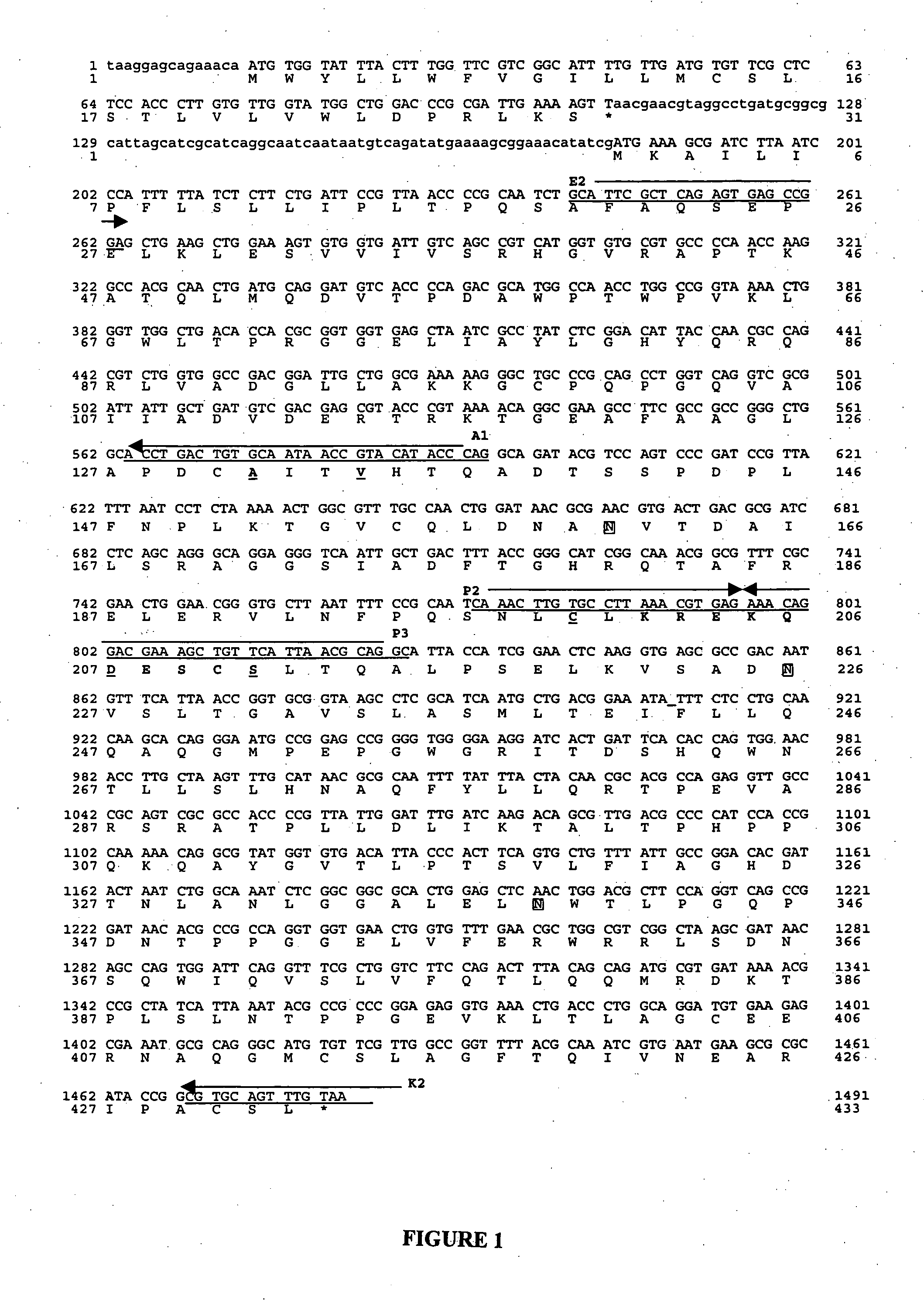Site-directed mutagenesis of Escherichia coli phytase
a phytase and escherichia coli technology, applied in the field of site-directed mutagenesis of escherichia coli phosphatase/phytase, can solve the problems of inability to use in animal industry, inability to meet the requirements of inorganic p, etc., to achieve enhanced enzymatic properties, enhanced thermostability and catalytic efficiency, and increased oxy mutagenesis, phytase mutagenesis of escherichia escherichia escherichia escherichia escherichia escherichia escherichia escherichia escherichia escherichia escherichia escherichia escherichia escherichia mutagenesis and site-directed mutagenesis, site-directed phytase--so--so--so--so--so--so--so--so--so-
- Summary
- Abstract
- Description
- Claims
- Application Information
AI Technical Summary
Benefits of technology
Problems solved by technology
Method used
Image
Examples
example 1
Sequence Analysis for Designing Mutations
[0048] The criteria for designing mutations to enhance glycosylation of the AppA enzyme were 1) the potential glycosylation site should have 25% or greater solvent accessibility, and 2) the site should be easily engineered by a single residue change to give an N-linked glycosylation motif (Asn—X—Ser or Asn—X—Thr, where X is not a proline). Initially, in the absence of a crystal structure for the AppA enzyme, the crystal structure of rat acid phosphatase (35% sequence identity) (Schneider, G. et al., EMBO J. 12:2609-15 (1993), which is hereby incorporated by reference) was used to calculate accessibilities as follows. First, the AppA enzyme and rat acid phosphatase were aligned to several closely related phosphatases / phytases using the multi-sequence alignment program PIMA (Smith, R. et al., Protein Engineering 5:35-41 (1992), which is hereby incorporated by reference). The aligned sequences included: human prostatic acid phosphatase precurso...
example 2
Construction of Mutants by PCR
[0049] The E. coli appA mutants were constructed using the megaprimer site-directed mutagenesis method adapted from previous studies (Seraphin, B. et al., Nucl. Acids Res. 24:3276-77 (1996); Smith, A. M. et al., BioTechniques 22:438-39 (1997), which are hereby incorporated by reference). To amplify the intact coding region of appA, the PCR was set up in a 50 μl final volume containing 200 ng DNA of appA inserted in a pAPPA1 plasmid isolated from E. coli strain BL21 (Dassa, J. et al., J. Bacteriol. 172:5497-500 (1990), which is hereby incorporated by reference), 50 pmol of each primer E2 and K2, 5 U of AmpliTaq DNA polymerase (Perkin Elmer, Norwalk, Conn.), 10 mM Tris—HCl pH 8.3, 50 mM KCl, 12.5 mM MgCl2, and 200 mM each dNTPs (Promega Corp., Madison, Wis.). The reaction was performed using the GeneAmp PCR system 2400 (Perkin Elmer), and included 1 cycle at 94° C. (3 min), 30 cycles of [94° C. (0.5 min), 54° C. (1 min) and 72° C. (1.5 min) ] and 1 cycle...
example 3
Subcloning and Expression
[0051]E. coli strain TOP10F′ (Invitrogen, San Diego, Calif.) was used as an initial host. The PCR fragments were purified and cloned into pGEMT-Easy vector (Promega) according to the manufacturer's instructions. EcoRi digestion of the isolated plasmid DNA was used to screen for positive transformants. The resulting inserts were cloned into pPICZαA (Kit Easy-Select, Invitrogen) at the EcoRi site and transformed into TOP10F′ cells plated on LB (Luria-Bertani) medium containing 25 μg / ml Zeocin. Colonies with desired inserts in the correct orientations were selected using SalI or BstXI restriction digestions of plasmid DNA. P. pastoris strain X33 (Mut+His+) was used as the host for protein expression (Invitrogen) and grown in YPD (yeast extract peptone dextrose medium) liquid medium prior to electroporation. Two μg of plasmid DNA were linearized using restriction enzyme Bg / II or PmeI and then transformed into X33 according to the manufacturer's instructions (In...
PUM
| Property | Measurement | Unit |
|---|---|---|
| molecular mass | aaaaa | aaaaa |
| Tm | aaaaa | aaaaa |
| pH | aaaaa | aaaaa |
Abstract
Description
Claims
Application Information
 Login to View More
Login to View More - R&D
- Intellectual Property
- Life Sciences
- Materials
- Tech Scout
- Unparalleled Data Quality
- Higher Quality Content
- 60% Fewer Hallucinations
Browse by: Latest US Patents, China's latest patents, Technical Efficacy Thesaurus, Application Domain, Technology Topic, Popular Technical Reports.
© 2025 PatSnap. All rights reserved.Legal|Privacy policy|Modern Slavery Act Transparency Statement|Sitemap|About US| Contact US: help@patsnap.com



